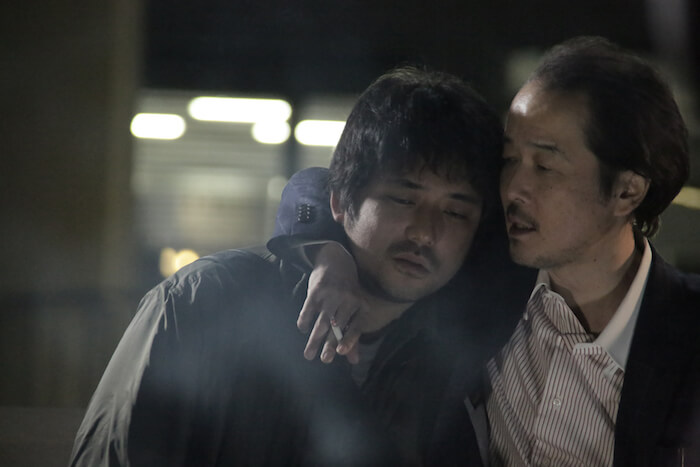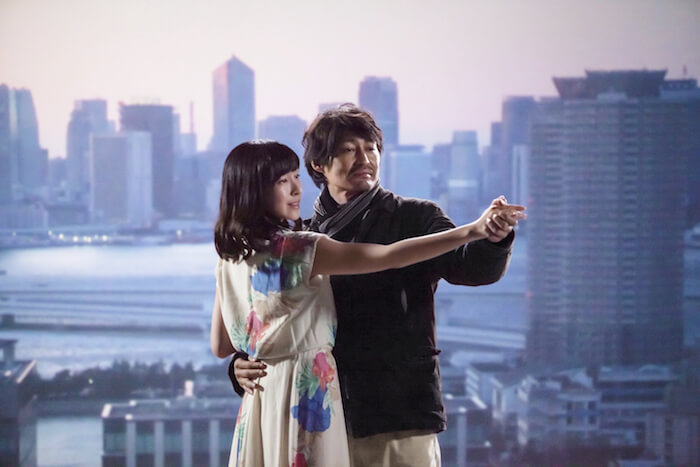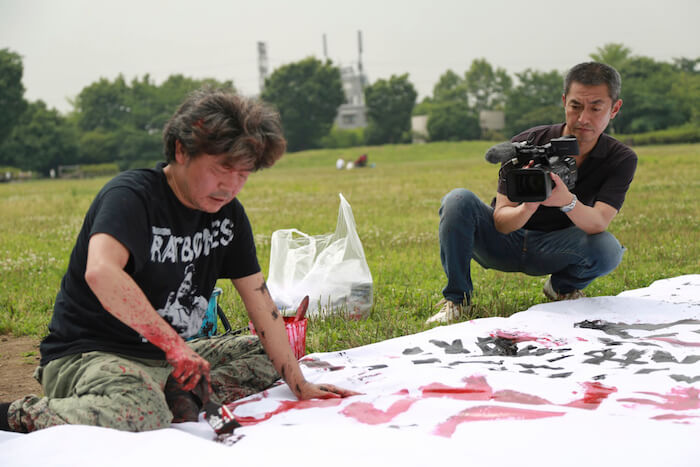Japan Cuts 2016: It’s Like a Whole National Cinema Out There
 Japan Cuts: Festival of New Japanese Film
Japan Cuts: Festival of New Japanese Film
July 14-24 at Japan Society
A more sociologically woke Japan Cuts curtain-raiser would coolly elucidate the thematic and aesthetic through-lines in the festival’s content that give clues to how the Japanese live now, and how the country’s recent artistic output takes the temperature of the zeitgeist there. But this iteration’s thoroughgoing eclecticism would make such conclusions inevitably pat and labored, even if I was clever enough to conjure them. Celebrating its tenth birthday, and second since emancipating itself from the New York Asian Film Festival, Japan Society’s annual series is more tricked out with bells and whistles than ever. In addition to the feature slate of 29 films, there is a documentary focus, experimental spotlight, looping microcinema, Q&As and intros with guests (a record 20) and, most exciting to me, a flash-back/flash-forward subset of the feature slate that pairs a director’s past, often most famous work with his or her newest.
In the case of Ryosuke Hashiguchi, the juxtaposition of Hush! (2001) with Three Stories of Love shows his maturity and growing confidence. With the former, the director continued to make good on the promise of 1993’s A Touch of Fever, an important box office hit in Japan both for being indie and gay-themed. Hush! has its flaws, particularly its romcommy premise (an anxious woman wants to mother one of a cute gay couple’s seeds) ill-supported by its draggy and digressive 135-minute runtime, but its best moments show Hashiguchi’s touch for light comic detail. The ambitious Three Stories of Love expands the canvas but retains the emphasis on the big picture-revealing detail. Hashiguchi developed the screenplay over eight months, molding it around his three main actors (all discovered in auditions), and you can feel the closeness of the director to his characters. Its “hurt people hurt people” premise doubles as Three Stories of Pain, about the zombically depressed widower and bridge inspector Atsushi (Atsushi Shinohara), the unhappily married Toko (Toko Narushima), nostalgic for a brief brush with Princess Masako caught on a constantly rewatched tape, and the gay corporate attorney Shinomiya (Ryo Ikeda), selfishly cocky and pleasure-seeking until he receives his comeuppance. Hashiguchi is not shy about lingering on their misery (especially Atsushi’s), but he never revels in it, and the wallowing never feels pointless. Their stories only gradually interlock, and then only fleetingly. Japan Cuts mascot Lily Franky (in three features and a guest) appears in one scene as a party buddy giving Atsushi the least helpful loudmouth advice since Peter Boyle’s in Taxi Driver. It’s a bit jarring when the ethereal upbeat refrain intrudes on the soundtrack, but it more often than not means some ironic twist is coming, until in the end it doesn’t.


Bitter Honey is the new film from Gakuryu Ishii. A fanciful fable about a sort of human goldfish-nymphet (Fumi Nikaido) who shacks up with an aging writer and loves to dance, the film is a light diversion spraying just a little venom in its mockery of entitled male fantasies. It’s barely comparable to the other Ishii film here, 1982’s Burst City, a waking nightmare of gunmetal industrial grays, belching blast furnaces and nihilistic cyberpunks and yakuza spasming at shows, behaving sadistically and going on chickie runs in some vague post-apocalyptic dystopia. Riffing on Mad Max, The Warriors and Seijun Suzuki, this influential film’s impact can be felt in Repo Man, Tetsuo and the films of Takashi Miike. Its formlessness is eventually maddening, but Ishii’s stylistic excesses (untethered roving camera, unprompted musical numbers) deserve to be seen.


A mildly conflicted love letter to the present-day Japanese film world, Satoko Yokohama’s sophomore feature The Actor is a good-natured charmer, enjoyable even if, like me, you don’t catch all of its industry in-references. Ken Yasuda is the weary alcoholic bit player muddling through a prolific career as if by accident. He might be tempted to improve his habits if his hungover bunglings weren’t mistaken for actorly daring—after the actor vomits in a samurai duel scene, the wizened, Kurosawa-like director tells him admiringly that he expelled “tears from your mouth.” True to the main character’s mindstate, lines between life, film and theater blur, and the unannounced scenes from fake movies are consistently inventive and subtly parodic.


There are no such meta games at play in Ken and Kazu, a taut crime indie that finds visceral and emotional depths within its Takeshi Kitano-inspired genre pool. Hiroshi Shoji is assured in his feature debut, keeping his camera trained in tight on his pair of title hoodlums, both damaged goods too tough to admit their co-dependence. Katsuya Maiguma’s Kazu is a charismatic psychopath reminiscent of The Wire’s Marlo; Shinsuke Kato’s Ken is the hangdog pragmatist. Shoji’s sky cutaways and ambient soundtracking are standard, but the sympathy mustered for these drug dealers is real. In an almost imperceptible throwback to the pre-yakuza film era, there’s not a gun to be seen amidst the violence. Less gritty are the slate’s more magical realist fare, such as Kako: My Sullen Past, like Bitter Honey also starring Nikaido, about a philosophically melancholy teen whose articulate moping is upended by the arrival of the embodied spirit of her thought-dead aunt, now a mysterious, possible domestic terrorist. A mysterious female visitor (maybe that is the festival through-line) also washes up in Yoshifumi Tsubota’s The Shell Collector, starring the aforementioned Franky in the title role as a blind professor living on a beach, boiling molluscs alive for their variety of shells. Hints of a disease that disrupted normal mainland life trickle in from a radio. Pregnant with metaphor, the film flirts with Christ parable when the professor (whose beach home is shell-like) cures the woman’s rare disease with a shellfish sting. The duo’s cabin fever sexual dabblings recall the madness of Woman in the Dunes, but The Shell Collector’s piling on of mysticism does tire.


Four portraits of artists make up the documentary focus. Arata Oshima’s The Sion Sono studies that absurdly prolific and divisive artist and filmmaker (he made six features in 2015) as he produces The Whispering Star, screening here along with Sono’s Love & Peace. Tatsuya Mori’s Fake is less straightforward, since its subject is Mamoru Samuragochi, a deaf composer celebrated as the “Japanese Beethoven” who was seemingly exposed as a fraud in 2014 by a colleague who claims he ghostwrote Samuragochi’s compositions for eighteen years, and that the latter is even faking his deafness. Confined mostly to Samuragochi’s ill-lit, grim apartment, Fake is a tough watch, but it cracks several interesting ideas about life performance, celebrity and the question of what constitutes authorship, in the spirit of Orson Welles’s F for Fake. Japan Cuts’ experimental spotlight is titled “Anime Vanguard,” and features shorts in that mode ranging from the “coital psychedelia” of MASTER BLASTER to the lush, cascading geometric visuals of Land and ZDRAVSTVUITE!. With so many cul-de-sacs and detours, there’s something for you at 2016’s Japan Cuts, whoever you are.
You might also like 



















